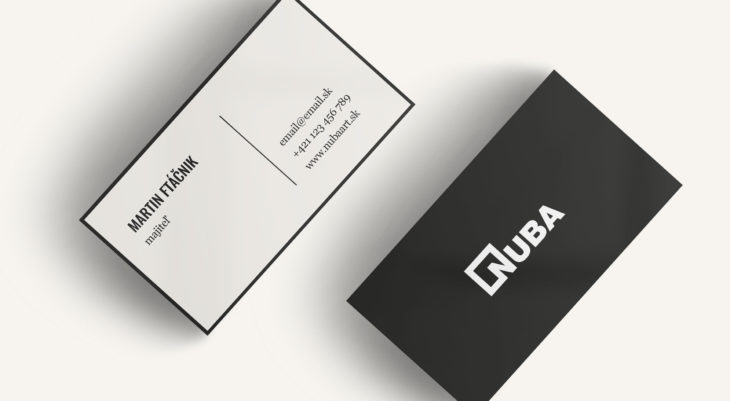The internet allows access to vast information, including art, which has its place in the digital world. Our client, the owner of www.nuba.sk, realized this and established a sales, collecting, and research gallery that stepped beyond the mainstream market and embarked on a journey of exploration, (self)discovery, art-collecting adventures, and new knowledge. They search for original artworks and the stories behind them, capturing the interest of art collectors and possibly others.
Behind the NUBA Gallery is a person with an exciting story:
Watch the documentary from the series “My Emigrant,” featuring Martin Ftáčnik.
The Future of Art is (also) Online
The client requested help creating a website for the NUBA Gallery to have its own online space for art sales. They wanted to be competitive in the 21st century and knew that online presence was crucial for the future of art researchers and dealers.
Fortunately, we had a well-informed customer familiar with other galleries’ projects. They came to the meeting prepared, bringing processed materials, sketches, proposals, and written texts. We appreciated this approach, which showed a suitable direction and helped us save time.
We analyzed the client’s requirements: They wanted to create a page where all available artworks would be photographed and sortable by author or category in the Sales section. Besides sales, the page should include a newsletter, social networks, and contact information. It should also contain information about the client. The research part of the project, which falls under the NUBA brand, should also have a prominent place on the site. The brand would also need a logo; our task would be to design it and create a basic design manual.
We agreed to create an attractive website to bring life and authenticity to art. Although gallery websites shown to us were well designed, they were all custom programmed, which is usually very expensive. We, therefore, proposed building the site using standard plugins to optimize the final cost.
Based on the provided sketches, we used specialized software for web wireframing. We defined the essential functions and content layout without focusing on detailed design, colors, or graphics, allowing us to estimate the project properly.



From NUBA Logo to Website
After the analysis, we created a new logo for NUBA. We searched for a simple symbol suitable for the logo. We presented several designs in the same color to the client and chose the final version. The main font used in the logo is Oswald. We created a single-color and inverted version of the logo for light and dark backgrounds. We also provided a manual with information on how to use the logo.
We can create a logo and brand usage guide (design manual) for any budget: Check out our references.
At Lemon Lion, we choose inexpensive and easily reproducible colors, present in many color palettes. The colors are technically precisely defined so clients can reproduce them without a physical color palette. We achieve this by defining the color range in which the colors are stated (the so-called color gamut). For NUBA Gallery, we designed the essential elements of the visual identity: logo, email signature, and website.
After completing the visual identity of the NUBA brand, we created a website in the WordPress system, as it is a prevalent website management system with great potential. We offered the initial content filling by our graphic designer. Based on the design manual, we created the necessary visual elements for the website.
On the gallery’s website, we used the most popular content editor, Elementor Pro, which allowed us to create a modern design and display the works very engagingly. We used animations that let visitors virtually peek at the backside of the artwork and created the impression of an actual physical object. Working in Elementor Pro allowed us to make the text more engaging and improve the website’s responsiveness. The overall appearance of the NUBA Gallery website pleases both the client and us.



Another challenge: How to digitize the works?
The client publishes a monograph of the solitaire Igor Ďurišin, whose collection consists of small, medium, and large drawings and several sculptures. The works needed to be scanned to be available digitally in the printed book and on the gallery’s website. The client’s scanner was insufficient for this task—the colors were inaccurate. They asked us if we could help solve the problem.
At Lemon Lion, we have photographed many works but never captured small art pieces such as paintings, illustrations, or film negatives. Therefore, we decided to use a new approach and photograph these works, and our studio in Púchov allows us to do this.
We designed a method for photographing paintings and drawings that preserves the correct contrast between light and dark tones, texture, and gloss. We used modern high-resolution cameras and top-quality lenses to achieve excellent quality and detail. The photography process was relatively fast after setting the technical parameters. In total, we photographed 600-700 works. The client was satisfied with the results and defined them as “highly usable.” Our experience with the NUBA project allows us to offer similar services to other customers.



Result: Engaging website and highly usable photographs of the works.
The NUBA project brought an original website for the gallery and, above all, a satisfied client. During the collaboration, they learned a lot about creating web content and understood that every detail is vital for the overall impression:
“The key from my side as the client was to be very clear about what I want from the result, what I want to present, how I want to present it, what identity I have, and what content I am bringing to the market,” emphasizes the client, for whom communication plays a crucial role during the collaboration. I also gave the agency space for creativity, which resulted in a very engaging outcome. The new website brought the client their first sales and inquiries.
Case Study Author Michaela Galambošová
Art-directing Martin Faktor
Webdesign Andrej Cibík
WordPress development Martin Faktor
Photography Matej Pobežal
Agency Lemon Lion










